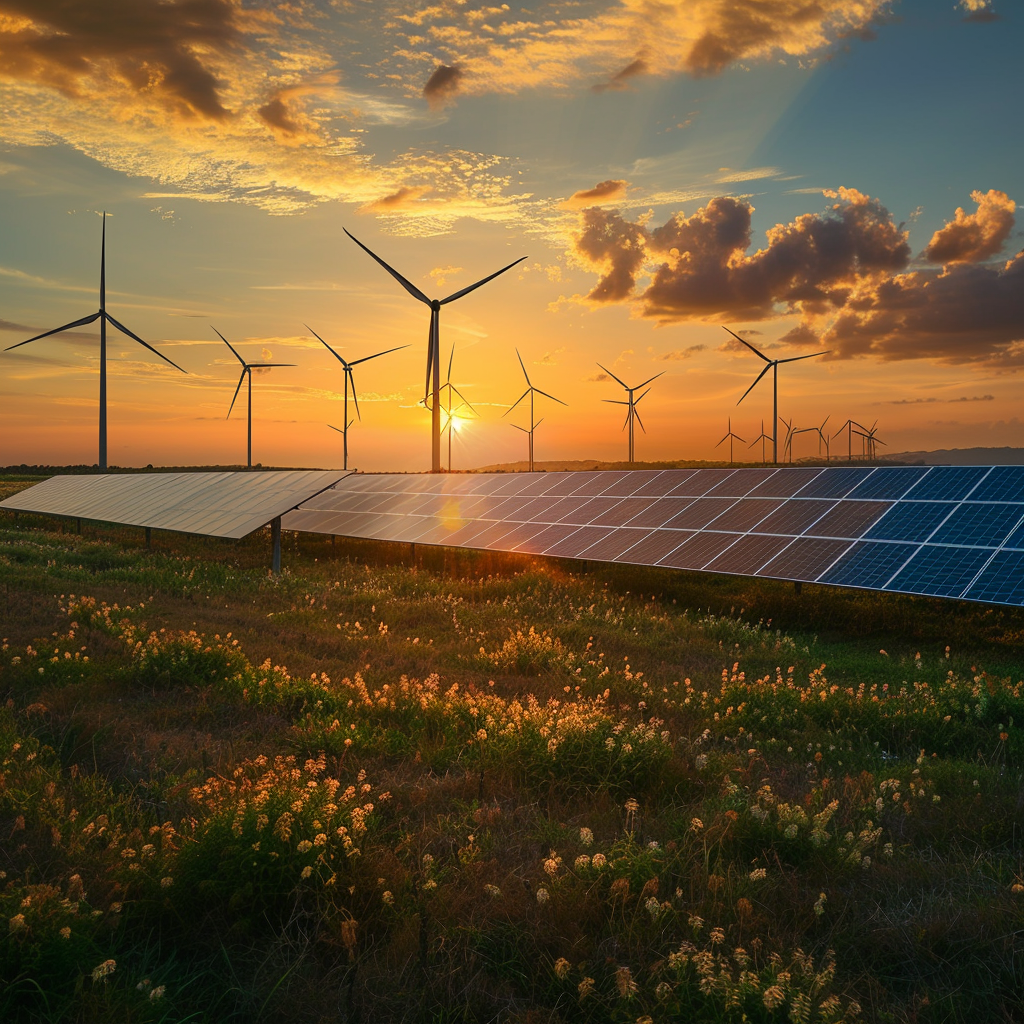

China’s formidable investment in clean energy, projected at approximately $675 billion this year, will significantly alter the global energy landscape. This aggressive approach towards renewable energy technologies, particularly solar power, firmly places China at the forefront of the green energy revolution. With a focus on expanding solar and wind capacity, China’s investment, bolstered by favourable government policies, streamlined regulatory processes, and advanced manufacturing capabilities, contrasts starkly with the relatively sluggish progress in Europe and the US. The National Energy Administration’s strategies highlight a significant shift from fossil fuels, although coal-fired power plants still play a role in the energy mix. The implications are profound: China’s leadership in green energy accelerates the global transition to sustainable energy and potentially redefines market dynamics, driving prices down and fostering technological advancements. However, this shift raises questions regarding energy dependency, economic competitiveness, and geopolitical balance as other regions strive to catch up. For businesses worldwide, particularly in Europe and the UK, this new reality presents both a competitive challenge and a collaborative opportunity in the realm of clean energy innovation.
China’s staggering investment of roughly $675 billion in clean energy for this year places it well ahead of Europe and the US, fundamentally reshaping the global energy market. The country’s focus on solar capacity and wind power, supported by advantageous government policies and efficient regulatory frameworks from the National Energy Administration, enables it to outstrip its Western counterparts. In contrast, Europe and the US are hampered by higher financing costs, fragmented policies, and difficulties in modernising grid infrastructures. Despite being the world’s largest emitter of greenhouse gases, China’s dedicated shift towards renewable energy highlights its significant role in combating climate change. Notably, China’s green energy initiatives, including energy storage and efficiency advancements, underscore its commitment. This disparity in clean energy investments underscores a pressing need for Europe and the US to innovate, collaborate, and advocate for policy reforms to remain competitive. If successfully addressed, these steps could promote sustainable energy adoption, ensuring energy security, job creation, and economic growth within these regions. China’s wind power capacity alone rivals the world combined, setting a benchmark for global energy strategies.
China’s clean energy spending far eclipses that of other major players like Europe and the US, setting a benchmark that is both impressive and daunting. With significant investments in green energy in China, including wind power generation and solar panels, China is projected to invest around $675 billion in clean energy this year, while Europe and the US fall significantly short together. This disparity can be attributed to several factors, including China’s favourable government policies, streamlined regulatory frameworks, and lower manufacturing costs. According to the Global Energy Monitor, China is also expanding its nuclear power capacity, further diversifying its energy portfolio. In contrast, Europe and the US face higher financing costs, inconsistent policies, and challenges in modernising their grid infrastructure. While China’s massive investments in green energy and onshore wind power may pose a competitive challenge, they also offer a collaborative opportunity for technological advancements and cost reductions. As China continues to decrease its coal consumption, Europe and the US must innovate and push for policy reforms that promote sustainable energy solutions, thereby ensuring their roles in the global transition towards a greener future.
China’s remarkable progress in the renewable power sector can be primarily attributed to its robust government policies and advanced manufacturing capabilities. The Chinese government has implemented a series of favourable policies, including substantial subsidies, tax incentives, and streamlined regulatory processes, which collectively foster an environment conducive to large-scale investments in renewable power. These supportive measures are complemented by China’s proficiency in manufacturing, particularly in the solar power industry, where the country leads globally due to its ability to produce high-quality technology at lower costs. This dual approach not only accelerates China’s transition to renewable energy and reduces its reliance on fossil fuels but also places it in a dominant position on the world stage. Furthermore, China’s advancements in renewable power play a significant role in addressing its energy consumption and working towards carbon neutrality. As other regions strive to match China’s momentum, the interplay between strategic government initiatives and manufacturing excellence emerges as a critical blueprint for advancing global clean energy goals, including a shift away from fossil fuels and the integration of nuclear power as part of a diverse energy mix. This comprehensive strategy is essential for mitigating China’s emissions and achieving a sustainable future.
European and American companies face many challenges in their quest to catch up with China’s investments in solar capacity and wind power. High financing costs, fragmented policies, and outdated grid infrastructures are significant impediments. Unlike China, where favourable government policies, streamlined regulatory processes, and robust manufacturing capabilities drive the green energy sector, the West struggles with inconsistent and often restrictive regulations. The higher cost of capital in Europe and the US hampers large-scale investments in clean energy technology, including solar panels and energy storage solutions. Additionally, these regions grapple with the technological and logistical demands of modernising existing grid systems to accommodate renewable energy use efficiently. To bridge this gap, there is an urgent need for comprehensive policy reforms, increased collaboration, and innovation in energy efficiency and sustainable energy technologies, ensuring that Europe and the US can compete effectively in the evolving global energy market.
China’s strategic clean energy investments illustrate a delicate balancing act between combating climate change and fostering economic growth. By dedicating roughly $675 billion to the clean energy sector, including solar power and wind power, China demonstrates its commitment to significantly reducing greenhouse gas emissions while simultaneously driving economic development. Government policies offering subsidies, tax incentives, and streamlined regulatory procedures have created a favourable environment for clean energy projects, enhancing China’s solar exports and expanding its renewable capacity. This approach not only bolsters China’s status as a world leader in renewable energy but also stimulates local economies through job creation and technological advancements. As China aims to reduce its coal capacity and reliance on fossil fuels, it also meets growing electricity demand with increased renewable sources. By bridging the gap between environmental sustainability and economic prosperity, China sets a compelling precedent for other nations striving to achieve similar dual objectives in the face of climate change challenges. With China’s installed capacity in solar and wind power growing rapidly, the country continues to lead the way in the global transition to clean energy.
Strategic industrial policies hold the key to unlocking Europe and the UK’s potential in the renewable energy sector, positioning them to compete with China’s formidable advancements effectively. Currently, high financing costs, fragmented policies, and outdated grid infrastructures impede significant progress. To overcome these challenges and move away from coal power, a cohesive industrial strategy must be developed, incorporating robust government incentives, streamlined regulatory frameworks, and substantial investment in modernising energy infrastructures. By fostering an environment that encourages innovation and supports large-scale renewable energy projects, including solar power, Europe and the UK can accelerate their transition towards carbon neutrality. Enhancing manufacturing capabilities, particularly in the solar industry and wind sectors, will be crucial in reducing production costs and increasing global competitiveness in electricity generation. Bridging the gap will require comprehensive collaboration between government bodies, private enterprises, and international partners, ensuring a resilient and sustainable energy future for the region.
To effectively close the gap with China’s substantial clean energy spending and rapid growth, Europe and the UK must focus on enhancing infrastructure development and streamlining regulatory processes. The outdated grid systems in these regions pose significant challenges to integrating renewable energy sources such as wind and solar efficiently. Modernising these infrastructures, including the addition of advanced energy storage solutions, is imperative to accommodate the growing demand for sustainable energy. Additionally, regulatory frameworks need to be simplified and made more consistent to encourage investments in green technologies and expedite project approvals for wind farms and other renewable projects. Government incentives such as subsidies and tax breaks are essential to reduce financing costs and stimulate innovation in the sector. A cohesive approach that combines robust industrial policies with substantial investments in infrastructure will enable Europe and the UK to compete with the Chinese economy’s aggressive advancements in wind turbines and other clean energy technologies, fostering a resilient and sustainable energy future for the region.
As China continues to lead the global clean energy market, collaboration between European and UK businesses with the Chinese economy becomes increasingly vital. By joining forces, these entities can leverage China’s advanced manufacturing capabilities in solar panels and solar power, streamlined regulatory environments, and substantial investment in renewable energy technologies. Such partnerships could facilitate the transfer of technology development and expertise, thus enabling European and UK firms to scale up their operations and reduce production costs. Additionally, collaborative ventures could open doors to new markets and investment opportunities, fostering innovation and growth within the green energy sector. Through strategic alliances, Europe and the UK can not only enhance their competitive edge but also contribute to global sustainability efforts, ensuring a shared commitment to addressing the pressing challenges of climate change while transitioning from coal mining to renewable solutions.

This website uses cookies to improve your experience. Choose what you're happy with.
Required for the site to function and can't be switched off.
Help us improve the website. Turn on if you agree.
Used for ads and personalisation. Turn on if you agree.
This website uses cookies to improve your experience. Choose what you're happy with.
Required for the site to function and can't be switched off.
Help us improve the website. Turn on if you agree.
Used for ads and personalisation. Turn on if you agree.